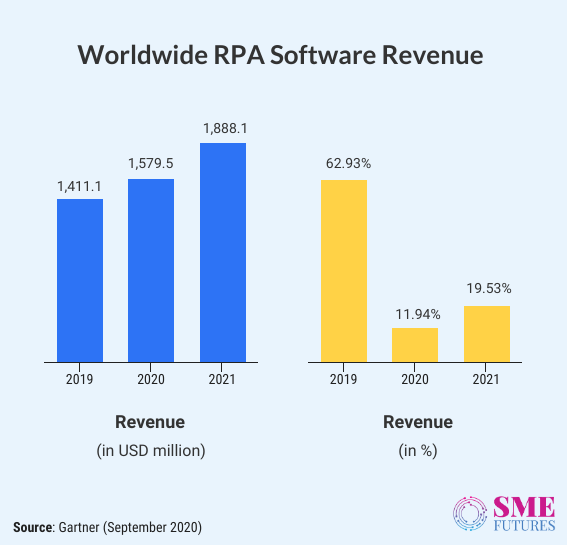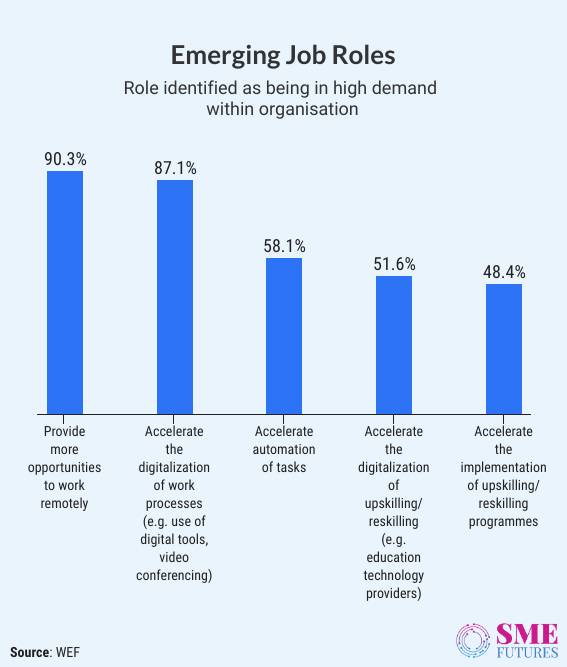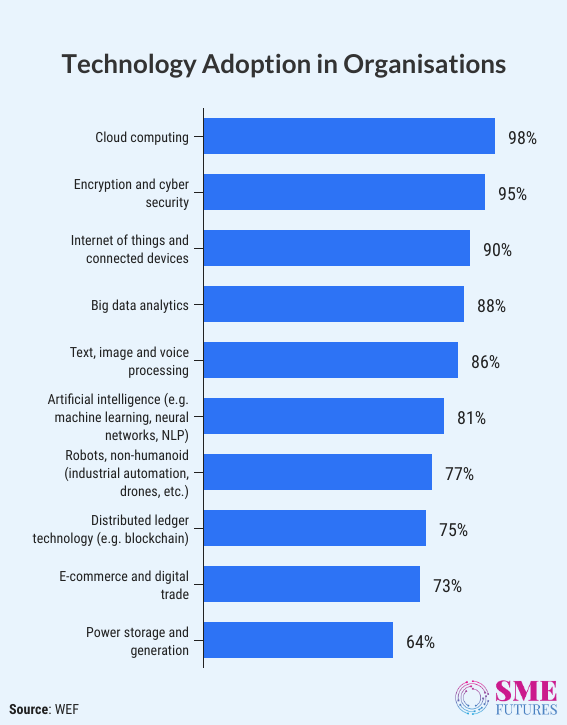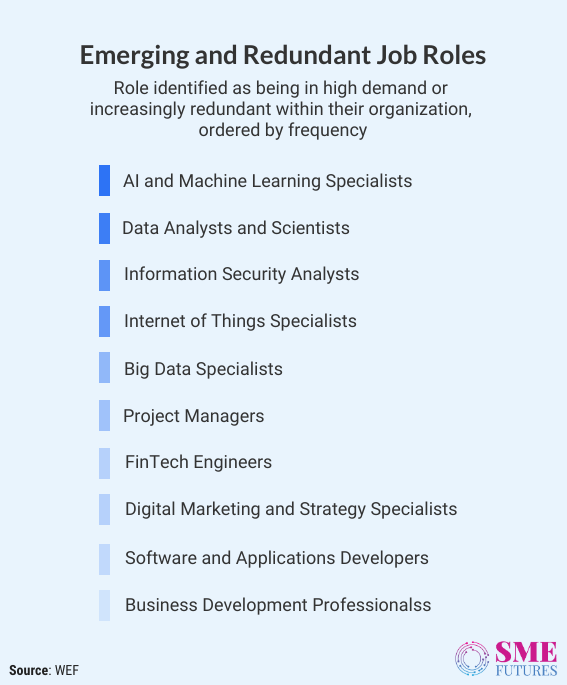Before the outbreak of pandemic, the workplaces were adapting automation at a steady pace but the new normal brought future of work in the form of automation with an accelerated pace at workplaces. Today, success of businesses depends on how quickly and how well a firm can harness technology to transform business processes or modernise workflow.
With this realisation, businesses have started utilizing technologies that can make them less labour intensive and can necessitate social distancing. As organisations intend to implement technology into their complex operations, it is significant to look at every facet of automation and its impact. It further means numerous opportunities, re-skilling of existing resources, and job creation with roles at the forefront dealing with automation.

Presenting his opinion on this, Sourabh Gupta, Co-founder and CEO of Vernacular.ai, AI-first voice automation SaaS company says, “Automation has become the buzzword to boost efficiencies and reduce operational costs while at the same time keeping customers satisfied. There is a completely new market which is coming online, and firms are waking up to these next billion users. Also, these users form a large chunk from the population of India. This is especially true for those whose significant volume of customers is from tier II and III cities, and towns.”
Market trends and newly emerged forms of automation
2020 has seen a drastic transformation in workplaces of all kind. Unsurprisingly, 2021 will continue to witness similar changes in workplace norms. Seeing this, Indian government has also eased compliance requirements for IT and BPO companies to help them in operating from home. Other companies are developing hybrid models in which coming to office of employees can be reduced.
Industry experts opine that these are best market sentiments for the automation sector to thrive in India. According to the Forrester Consulting, up to 30 per cent of organisations will ramp up their focus on quality by better planning and testing automation in 2021 before deploying it to production or exposing it to employees.
Many firms will invest in conversational artificial intelligence, machine learning, and hardware advances to help in easing out some of these changes in workplace. The report further says, “As a result of the pandemic, new forms of automation will support one in four remote workers either directly or indirectly by 2022.”

For instance, companies are adopting intelligent document extraction platforms (IDEPs) at a rapid pace. It is predicted that 20 per cent of enterprises will expand their investments in intelligent document extraction. This is becoming popular for two reasons. First of all, workers can no longer push papers because they are working from home. Secondly, advancements in computer vision and machine learning have made solutions easier to implement.
Likewise, RPA sector is becoming popular rapidly as it is used to handle repetitive business processes using software robots. Forrester report predicts that machine learning and RPA will become an embedded feature in many platforms by the end of 2021. It states about 48 per cent of businesses around the world will increase RPA adoption due to COVID-19. If this trend continues, experts believe Indian RPA market growth will surpass $100 million by 2025.
According to Gartner research, worldwide RPA software revenue is expected to reach $1.58 billion in 2020. This indicates an increase of 11.9 per cent from 2019. During 2020, average RPA prices are expected to decrease from 10 per cent to 15 per cent. An annual 5 per cent to 10 per cent decrease is also expected in 2021 and 2022. This will further create strong downward pricing pressure.
Worldwide RPA Software Revenue (Millions of U.S. Dollars)
| 2019 | 2020 | 2021 | |
| Revenue ($M) | 1,411.1 | 1,579.5 | 1,888.1 |
| Growth (%) | 62.93 | 11.94 | 19.53 |
As a part of this ongoing automation trend, drones are also widely accepted now. Recent rapid growth in consumer drones industry has fueled momentum in the commercial drone market. While social distancing is a primary factor in the increased usage of drones, the other two factors will accelerate its adoption in 2021. “First, governments are crafting better regulations to facilitate drone adoption and commercialization, with Amazon Prime Air gaining FAA approval for drone deliveries and India driving drone pilot training,” states the Forrester report.
Secondly, the rapid evolution of computer vision and 5G will enable real-time drone intelligence over ultra-reliable, low-latency communications. JobSquare, a tech-based recruitment platform has reduced the standard hiring time after adopting automation technology. The company has implemented tools such as NLP (Natural Language Processing), ML (Machine Learning), and AI (Artificial Intelligence) during hiring process.
Ishit Jethwa, CEO of JobSqaure claims, “Automation has in fact allowed JobSquare to reduce the hiring time of 40 – 60 days to less than 7 days. Time and cost are two essential factors in the HR industry. If addressed with precision, it can help a company to grow at a faster rate. Automation of processes has helped recruiters to connect to the right candidate instantly which has made JobSquare an irreversible choice for them.”
SaaS solution providers milking the automation trend
Sectors such as BFSI and call centres are pioneer in adopting the automation. But experts predict that goods and services, logistics sectors will also focus on adopting automations strongly in near future. Along with this, organizations focused on implementing automation solutions in India have registered exponential growth. UiPath announced that it clocked 20 per cent YoY growth in India since February.
“The COVID situation has spurred demand for automation technologies,” states UiPath President (India and South Asia) Manish Bharti in a statement. He further adds, “Our new customer acquisition and expansion among existing clients is almost at the same pace in India in H1 2020. We acquired over 80 customers in India during pandemic. Demand from existing customers who were probably going slow, not scaling-up is also there.”
Another firm Dash101, a SaaS solution provider is helping organisations to build their online business by offering solutions based on automation tech. Kalpak Chhajed, Co-founder of Dash101 talks about the automation sector which is witnessing a spontaneous growth. According to him, the Indian automation market is expected to reach $4.43 billion by 2023.
He says, “With people locked in their homes, companies relied on automation to ensure that their business kept running smoothly. At Dash101, we built-in automation tools to ensure smooth deliveries for reducing costs and increasing returns. We expect to see more businesses adopting automation and eCommerce is already witnessing a whopping increase. Automation will play a key role in eCommerce logistics.”
Dash101 offers SaaS solutions to improve logistics and deliveries for organizations and e-commerce entrepreneurs which have just launched their ecommerce business. These solutions contain advanced features like AI/ML-powered NDR management, easy integration with Shopify, and WooCommerce. “Our advanced AI/ML engine alerts online sellers about wrong addresses and even recommends courier partners based on cost and reliability for chosen pin codes. Also, the online seller can automate the ‘Shipping Partner Recommendation engine’ (SPRe),” informs Chhajed.
Similarly, with the flourishing market voicebots specialist Vernacular.ai has been witnessing a rise in revenue. Its CEO, Sourabh Gupta tells, “With a significant share of our revenues based on voice AI and automation of the contact center, we have witnessed a doubling of revenues and shorter sales cycles. There is an evidence of accelerated demand and adoption of automation across industries. Also, it is not restricted just to India.”
Gupta further believes that future of human-machine interaction is voice. Hence, solutions they design are well positioned to cater to the large demand for voice AI solutions. “When we take the customer contact center business, the focus is more on moving towards increasing productivity and efficiency which further results in accruing quick and measurable results. This is something that our solution can provide to enterprises,” adds Gupta.
Pandemic propels home automation devices
Pandemic has also boosted market for smart home devices. The Indian home automation market size which was valued at $1,790.9 million in 2018 is expected to reach at $13,574.1 million by 2026. It is growing at a CAGR of 29.8 per cent during the forecast period 2019-2026, states Allied Market, a research platform.
Factors such as social distancing and increased penetration of internet are cementing this market in India. As per the market analysis, residential segment occupies 60 per cent whereas individual usage accounts for ~80 per cent. Further, utility of builders account for ~20 per cent, the commercial segment accounted for 30 per cent of the entire segment, while hospitality industry occupied the remaining 10 per cent, as of 2018.
Pulak Satish Kumar, Director and COO at Puresight Systems Pvt Ltd, official distributor of iRobot products in India while talking to us opines, “Since the pandemic knocked the door of India, we have witnessed lesser dependency and availability of house helps. Under such situation, there was a great need of solutions which will provide people the ease of doing things faster and better. The spike in the sale of robotic vacuum cleaners, dishwashers and other appliances proved how the adoptability of smart automated appliances has increased.”
The sale of home automation devices is being driven by new and first-time users currently. According to Kumar, it was an unprecedented demand which shows that a large segment of people in India are now aware of these technologies and products. But with the crisis, the available technological products and solutions crossed their niche segment audience and reached early adopters in the diffusion of technology cycle.
When asked about the demand and revenue growth, Kumar informs that due to heightened awareness, there is a sharp hike in demand for iRobot products. “The increase in demand was three times and we saw a huge jump in the dependability of our products from the customer’s perspective. The iRobot robotic vacuum cleaners and Braava mop has really helped people in this difficult time to clean their floors effectively. This is an evolving category, but we are seeing higher degree of penetration of our products after lockdown,” he informs.
Currently with a surge in demand, companies in this sector are innovating to provide best features in these products. In addition to it, consumers desire minimal maintenance assurance from providers in terms of warranty and post-sales service. Therefore, Kumar believes that the segment is only going to grow in India, especially in the hospitality industry.
He says, “As far as smart appliances category is concerned, it is still an evolving category in India. The spike in the sale of robotic vacuum cleaners, dishwashers and other appliances proved has increased the adoptability. So, there is bound to be an increase in the demand for this category of products in 2021.”

Automation and future of jobs
Automation and robotic intervention in workplaces have changed the landscape of jobs. Experts in the field feel that future of work has arrived early due to COVID-19. This may lead to 85 million jobs getting displaced in next five years in medium and large businesses across 15 industries and 26 economies.

World Economic Forum analysis states that roles in data entry, accounting, and administrative support are decreasing in demand with an increase in automation at workplaces. More than 80 per cent of businesses are accelerating plans to digitalise work processes and deploy new technologies. Furthermore, nearly 50 per cent of employers are expecting to accelerate the automation of some roles in their companies.
In contrast to previous years, job creation is now slowing while job destruction is accelerating. Commenting of changing landscape of jobs, Jethwa of JobSquare says, “Automation as an industry is still in its early stages. As advanced and interesting automation sounds, more difficult it is to find resources for its implementation. Over 50 lakh jobs were lost in the last 8 to 9 months. Hence, it is extremely challenging currently to invest in acquiring resources.”
At the same time, WEF study says the robot revolution will create 97 million new jobs. But the communities which are at risk from this disruption will need support from businesses and governments. By 2025, employers will divide work between humans and machines equally. Roles that leverage human skills will rise in demand. Machines will primarily focus on information and data processing, administrative tasks, and routine manual jobs.
The tasks where humans are set to retain their comparative advantage include managing, advising, decision-making, reasoning, communicating and interacting. There will be a surge in demand for workers who can fill green-economy jobs, roles at the forefront of the data and artificial intelligence economy. The new roles in engineering, cloud computing and product development will also emerge in near future.
But for those workers set to remain in their roles in the next five years, nearly 50 per cent will need re-skilling along with their core skills. On this Jethwa comments, “Everyone right now is learning various skills on their own through the series of online teaching courses available. This shall help to bring a balance and combat the demand in the near future.” According to him, people are looking at data skills to pursue a career as a Business Analyst or a Data Scientist. Artificial Intelligence courses are for a career in Machine Learning and Business Intelligence.
Top leaders will pave the right path
With businesses increasingly inclined towards automation, CXOs and CTOs are playing a critical role in implementing automation. These are the ones who collaborate across firms, setting objectives and budgets and extending IT-business partnerships into enterprise level shared accountability. They are also investing aggressively into employees, technologies for continuity of businesses.

In fact, if top leaders are focused on adopting with pace will help their firms to grow and retain clients. Whereas organizations with leaders which are not abreast with technological developments will face multiple challenges such as hassles in tech modernization, simplification, and consolidation. Hence, leaders necessarily need to upgrade their operational strategies to keep pace with all automation changes and to harness all possible opportunities created because of it.











